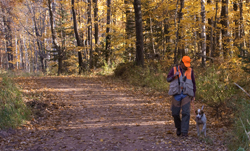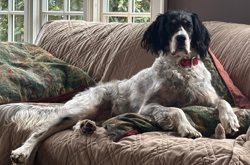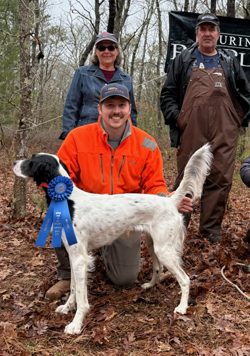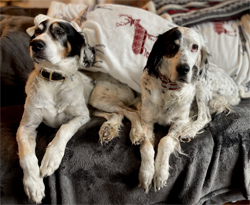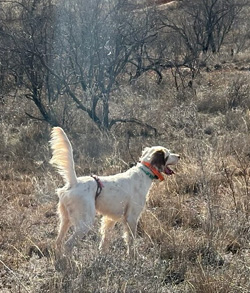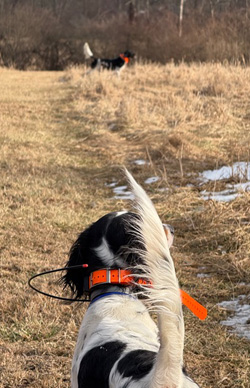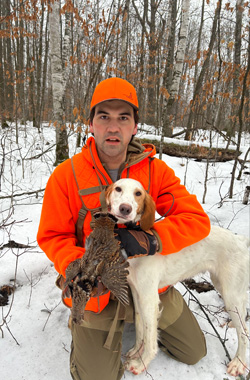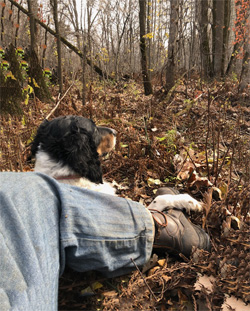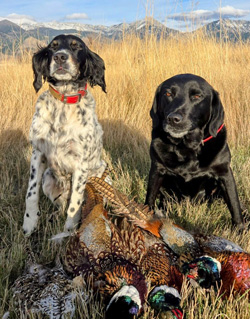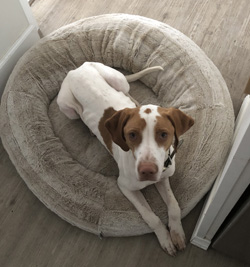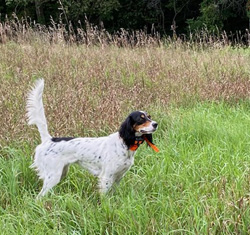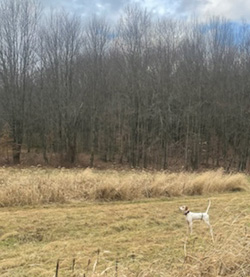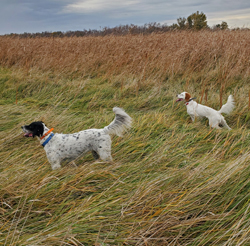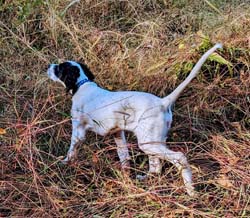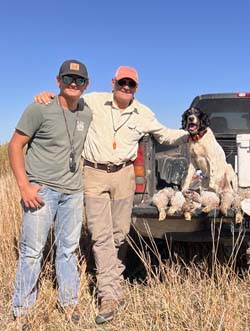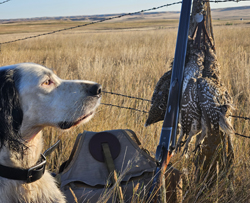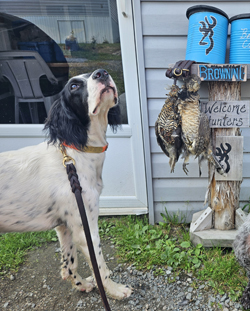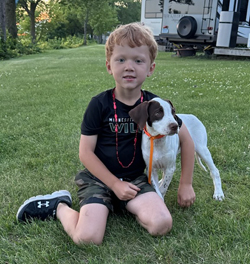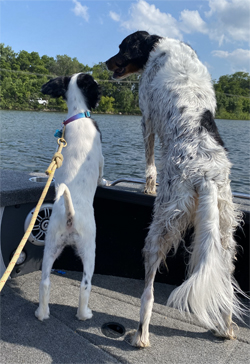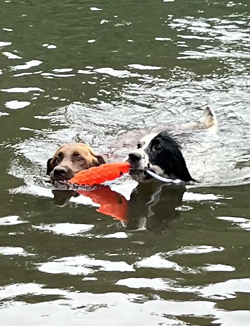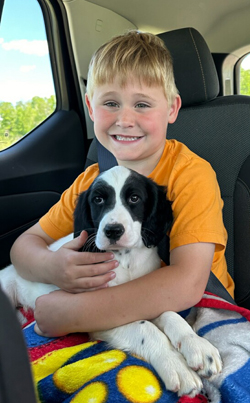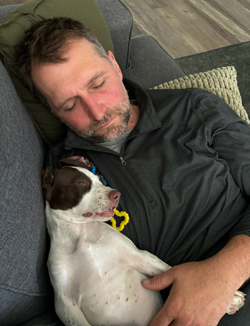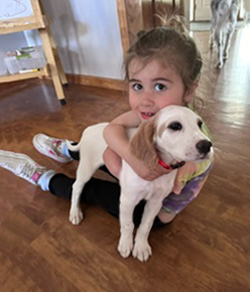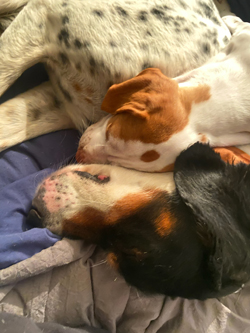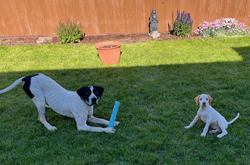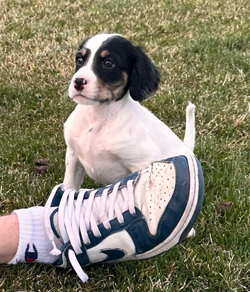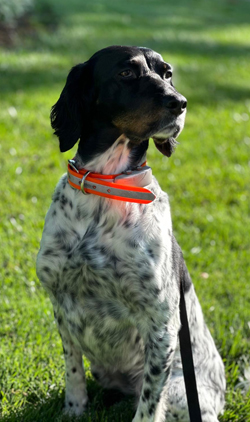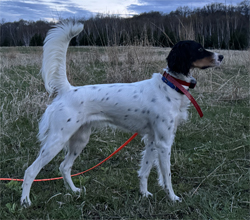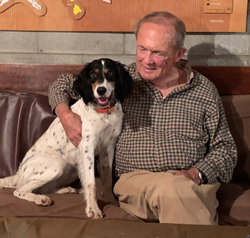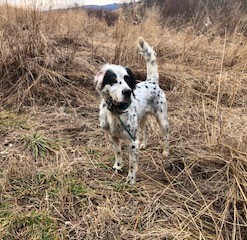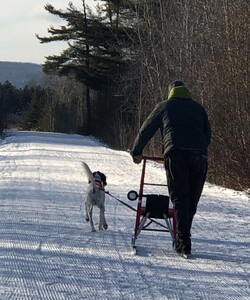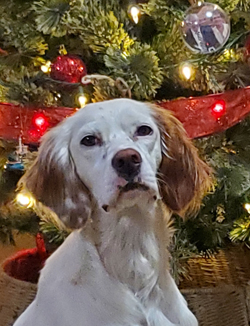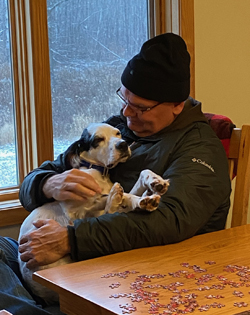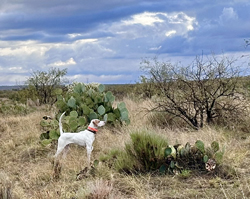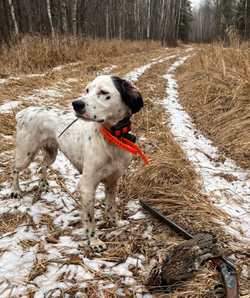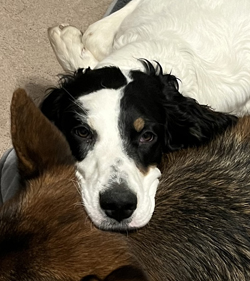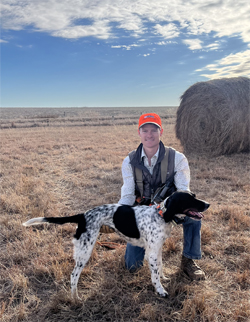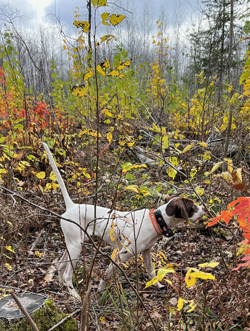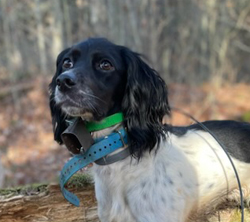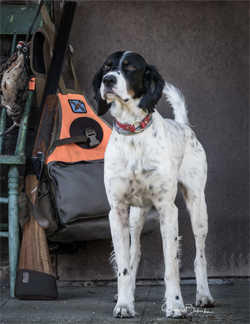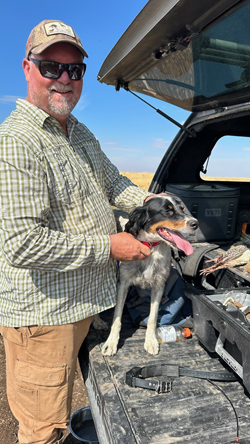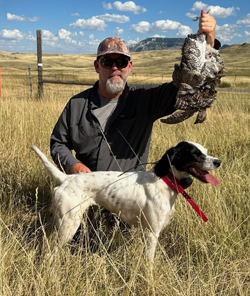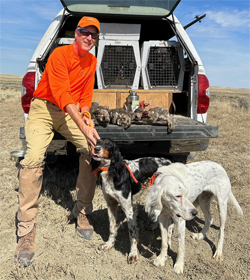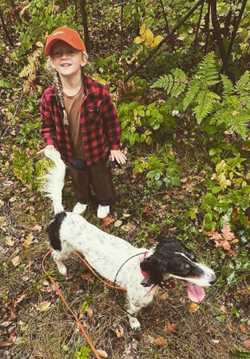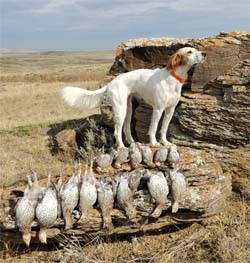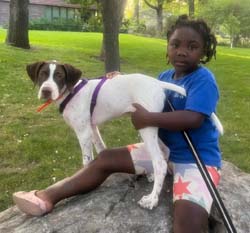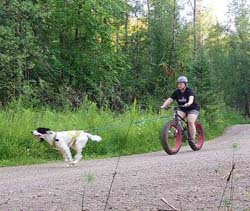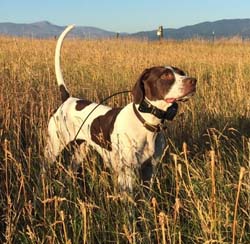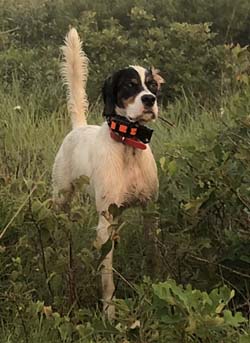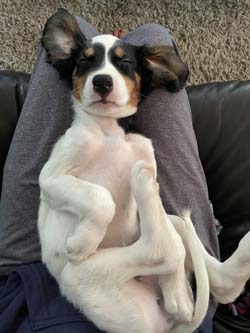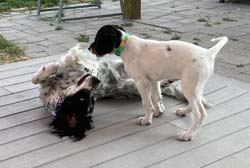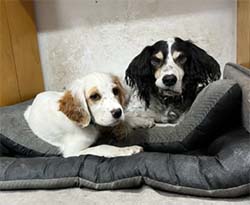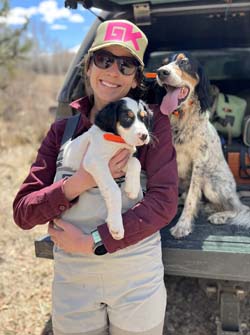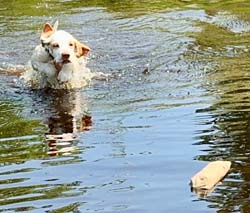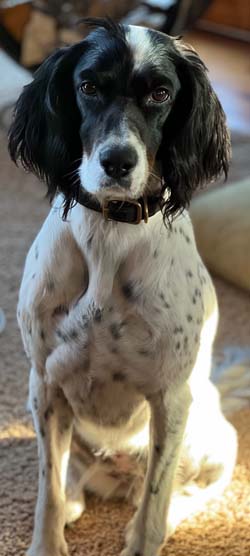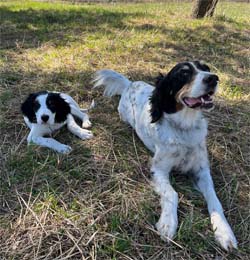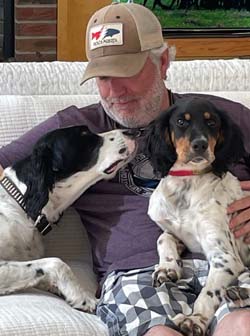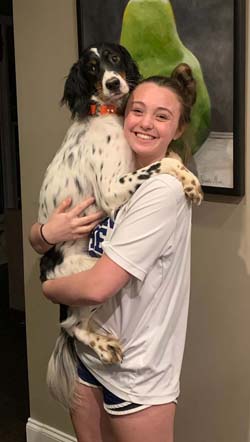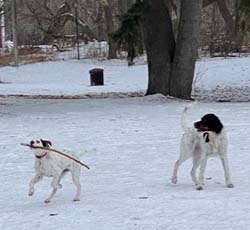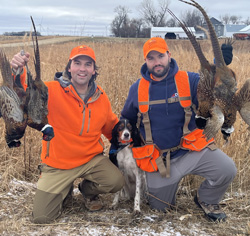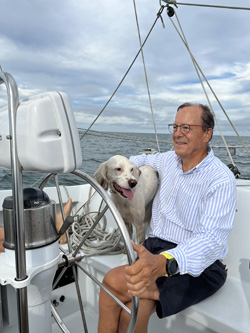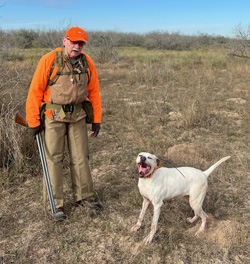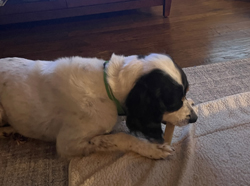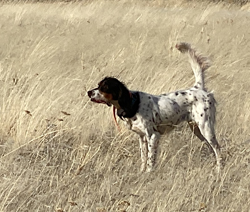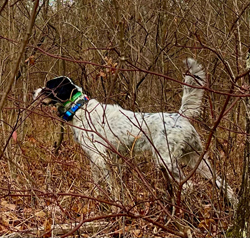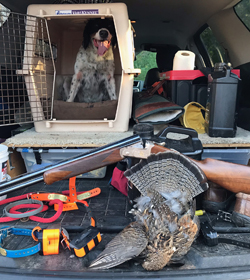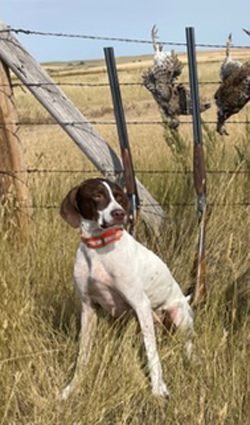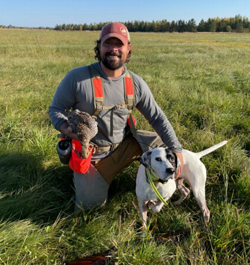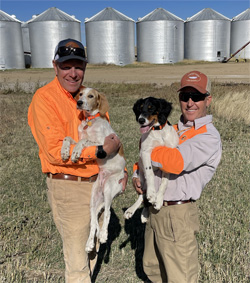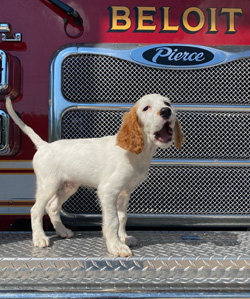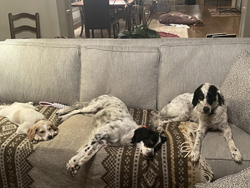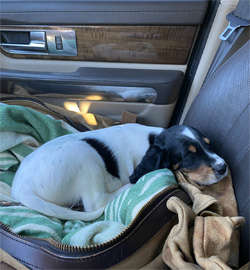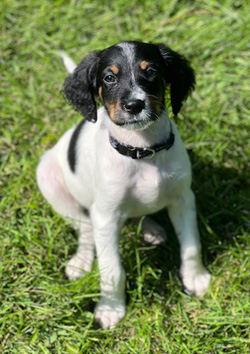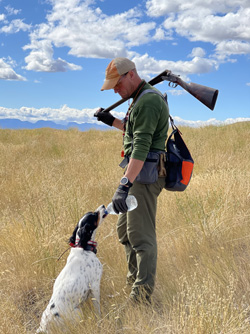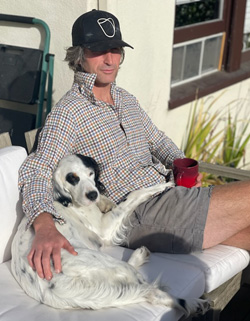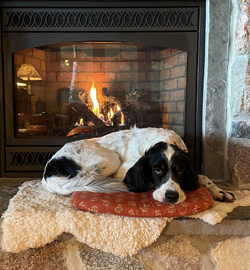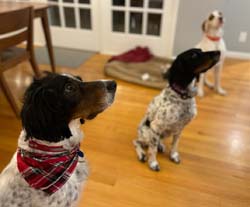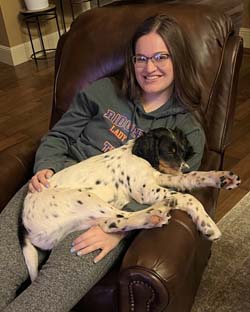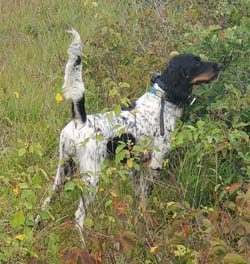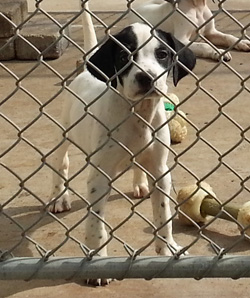Backing point
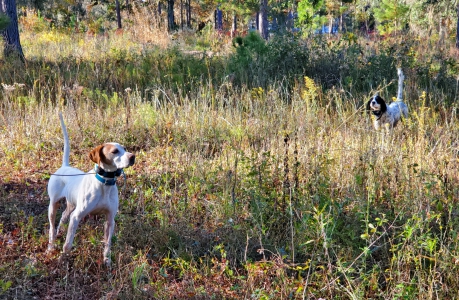
Northwoods Vixen (CH Westfall’s Black Ice x Northwoods Prancer, 2011) is backed expertly by Northwoods Gucci (CH Erin’s Hidden Shamrock x Northwoods Chardonnay, 2015) while bobwhite quail hunting in northern Florida.
Even though there are countless heart-thumping sights an upland bird hunter encounters, there is something at once classic and captivating, mannerly and marvelous about seeing one dog backing another dog’s point.
Backing point, also called honoring or, simply, backing, is when one dog sees another dog on point, stops and points that dog. A back doesn’t involve scent; rather it’s strictly by sight. According to C.B. Whitford, author of the 1908 book Training the Bird Dog, “Backing is another form of expression for the pointing instinct.”
Like the ideal point, the ideal back isn’t either too far away from or too near to the dog that is pointing. The backing dog should be close enough so it can mark where the birds fly and find dead birds.
Backing point is genetic. Dogs that inherit a strong instinct might back perfectly the first time they see a dog on point while it might take several opportunities for dogs with less. Still others might have to be trained to back.
Backing point is important—and at times essential or crucial—when two or more dogs are hunted together. Not only does backing keep one dog from flushing birds pointed by another but it keeps the hunt safe and dogs out of shooting lanes.
Backing point is complex. Over the last 35 years, I’ve seen many unusual backing situations while hunting and guiding. There have also been interesting circumstances in field trials whether I’ve been competing or just watching a brace.
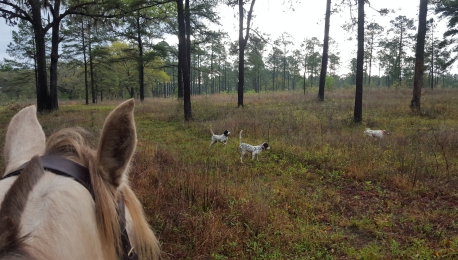
A heart-thumping site! During a training run on bobwhite quail, Jerry and his horse come upon three setters—one pointing and two backing.
Patch, one of my first setters, had lots of instinct to point, but when braced with Adrienne, my veteran Brittany, he waited for her to find the birds and then backed.
I’ve observed dogs refuse to back a bracemate after that bracemate had several unproductive points in a row. Sometimes bracemates become competitive and refuse to honor the other’s point.
Occasionally, a dog doesn’t see another dog on point, even though it seems obvious. While walking a brace during the Lake States Grouse Championship many years ago, I watched a setter, nose to the ground, run circles around a dog on point. The setter was so intent following his nose that he didn’t see the other dog. When he finally raised his head, he immediately backed, but by then it was too late and he was ordered up.
I’ve also seen a dog that doesn’t stop until alongside another dog on point. While not considered good behavior, it isn’t a major offence as long as the dog doesn’t flush the birds. But the situation can degenerate if a dog points in front of the other dog on point (stealing point) or flushes the birds (bumping). In a hunting situation, the hunting companion might become alienated and in a field trial, the offender will be picked up.
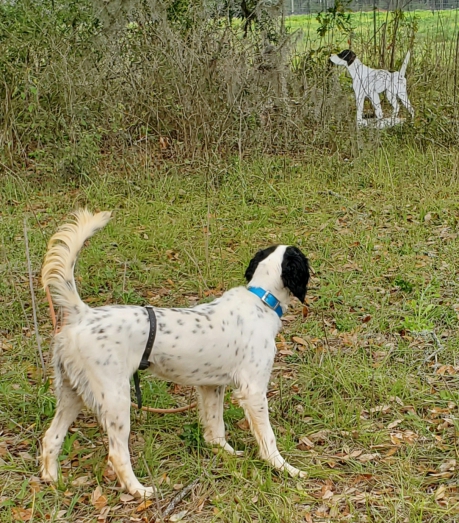
With e-collar in place, Northwoods Super Nova (Northwoods Rob Roy x Northwoods Minerva, 2019) backs the dog silhouette.
Training to back point is incorporated into my sessions at the same time I teach steadiness around birds. Ideally, the dog is ready after a season of hunting wild birds and when it holds point long for me to flush the birds. The dog is usually between 8 and 12 months of age.
The first step of steadiness training is teaching the dog to stop and stand still when it feels e-collar stimulation on its flank. Once the dog masters that association, I move to the next step which is to create an association between birds and a dog on point.
For this, I use a dog silhouette, a life-sized cutout of a dog on point that I made out of plywood and painted. I place the silhouette in the field with a pigeon in a remote bird launcher behind it. I lead the dog into the field and, if it doesn’t back as soon as it sees the silhouette, I flush the pigeon and stop the dog with e-collar stimulation on the flank. If the dog does back, I walk in and flush the bird, stopping the dog if it starts to chase. Once the bird is gone, I lay the silhouette on its side.
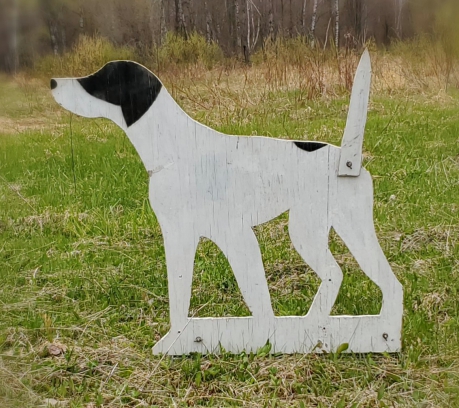
When teaching a young dog the essentials of backing point, Jerry uses his handmade dog silhouette which he cut out from plywood and painted.
At this stage, I don’t use any verbal commands. I want the dog to learn with minimal distraction.
When the dog backs, I physically reward it with light strokes against the grain along the top of its back. I also say, “Whoa,” in a soft but firm tone. After this praising, I walk in, flush the bird, tip the silhouette on its side and release the dog to move on.
I keep the sessions short and mix them up. I have the dog back once and point its own birds once or twice but I also have a session or two without requiring a back at all. The silhouette is moved to different locations, too. It’s important not to overdue this phase.
Once the dog backs reliably in the training field, it is ready for wilds birds with a bracemate.
Since dogs learn behavior in context, I don’t expect the dog to back the first time on wild birds. Initially, I use a reliable bracemate, one not prone to unproductive points. Once that dog points, I let the inexperienced dog decide what to do. If it doesn’t back, I let it go past the pointing dog until it causes the birds to flush and then stop it with flank e-collar stimulation, again without any verbal distraction.
When the dog backs, I physically praise it and say, “Whoa,” just as in the training field. Repetition, time and maturity will still be necessary before the dog becomes dependable.
But even with training, experience and maturity, backing point is never 100% reliable. There are just too many circumstances with endless possibilities.
The best bird dogs I’ve trained, owned or competed against occasionally made mistakes.




